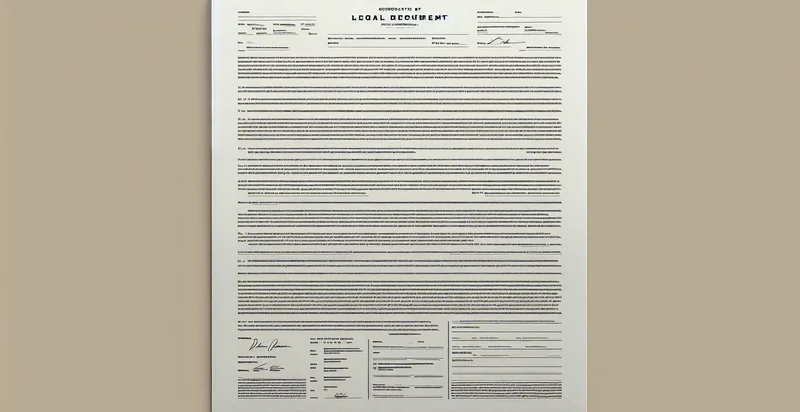Identify legal document type
using AI
Below is a free classifier to identify legal document type. Just upload your image, and our AI will predict what type of legal document it is - in just seconds.

Contact us for API access
Or, use Nyckel to build highly-accurate custom classifiers in just minutes. No PhD required.
Get started
import nyckel
credentials = nyckel.Credentials("YOUR_CLIENT_ID", "YOUR_CLIENT_SECRET")
nyckel.invoke("legal-document-type", "your_image_url", credentials)
fetch('https://www.nyckel.com/v1/functions/legal-document-type/invoke', {
method: 'POST',
headers: {
'Authorization': 'Bearer ' + 'YOUR_BEARER_TOKEN',
'Content-Type': 'application/json',
},
body: JSON.stringify(
{"data": "your_image_url"}
)
})
.then(response => response.json())
.then(data => console.log(data));
curl -X POST \
-H "Content-Type: application/json" \
-H "Authorization: Bearer YOUR_BEARER_TOKEN" \
-d '{"data": "your_image_url"}' \
https://www.nyckel.com/v1/functions/legal-document-type/invoke
How this classifier works
To start, upload your image. Our AI tool will then predict what type of legal document it is.
This pretrained image model uses a Nyckel-created dataset and has 31 labels, including Affidavit, Articles Of Incorporation, Bill Of Sale, Brief, Bylaws, Cease And Desist Letter, Child Custody Agreement, Contract, Court Filing and Employment Contract.
We'll also show a confidence score (the higher the number, the more confident the AI model is around what type of legal document it is).
Whether you're just curious or building legal document type detection into your application, we hope our classifier proves helpful.
Related Classifiers
Need to identify legal document type at scale?
Get API or Zapier access to this classifier for free. It's perfect for:
- Document Sorting Automation: This use case involves automatically classifying legal documents into their respective types (e.g., contracts, pleadings, briefs). By streamlining the sorting process, law firms can improve efficiency and reduce the time legal professionals spend on manual categorization.
- Compliance Monitoring: Legal departments can use the identifier to ensure that all documents meet regulatory standards by categorizing them based on compliance requirements. This enables organizations to identify and remediate potential compliance issues promptly, minimizing legal risks.
- Document Retrieval Enhancement: Implementing the document type identifier speeds up the search and retrieval process for legal professionals by allowing them to filter documents based on type. This helps lawyers quickly access relevant documents, improving response times for clients and cases.
- Contract Management Optimization: Organizations can utilize the classification function to manage contracts more effectively by categorizing them into types like NDAs, service agreements, or partnership contracts. This ensures that key deadlines, renewal dates, and obligations are tracked efficiently.
- Legal Research Support: Legal researchers can leverage the identifier to quickly assess the types of documents referenced in their cases, focusing their research efforts on relevant materials. This improves the overall quality of legal research and supports more persuasive arguments in court.
- Case Management System Integration: Integrating the document type identifier into case management systems provides a clearer overview of the types of documents associated with each case. This enhances organization and facilitates better collaboration among legal teams by ensuring everyone accesses the right documents.
- Document Analytics and Insights: With the ability to classify legal documents by type, organizations can analyze their document portfolio for trends and insights. Such analysis can inform strategic decision-making, resource allocation, and risk assessment, ultimately contributing to better management of legal operations.


